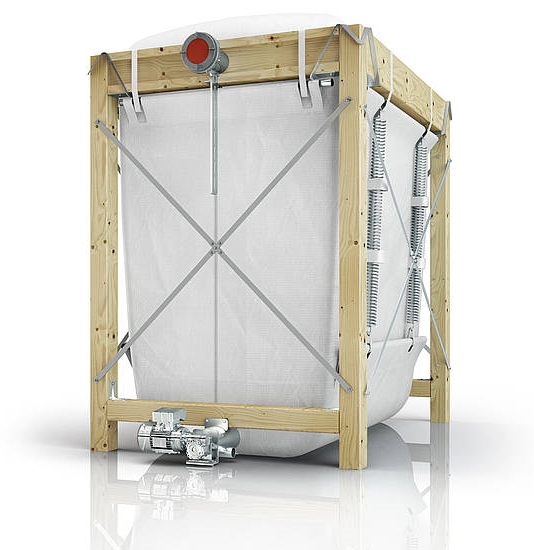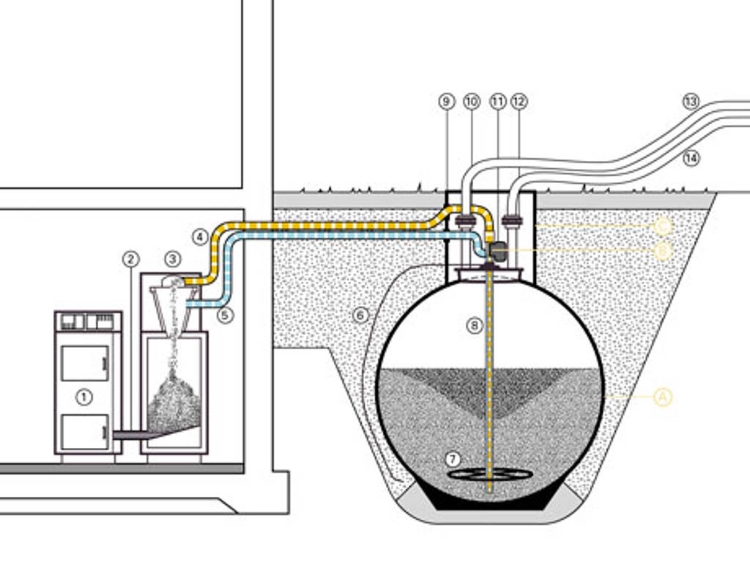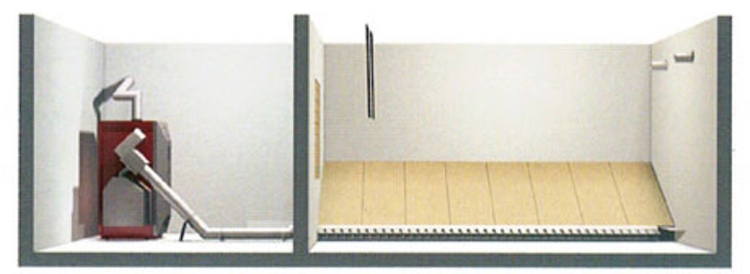Pellet storage options are diverse, and the choice of one system over another depends primarily on the space available. The boiler installer, having evaluated your solution, will be able to advise you on the best choice to adopt.
Here are some solutions below!
Fabric silo
Simple to install, fabric silos offer great placement flexibility and require no special construction work.
The fabric used for these silos is antistatic, permeable to air but impermeable to dust. There are different sizes on the market, depending on need, up to a capacity of 12 tons.

© proPellets.ch
Underground tank
In case of lack of space inside, there is the option of installing an underground tank outside. Made of concrete, synthetic material or GFK polyester, such a tank is watertight against moisture and resistant to groundwater thrusts. It can have a diameter between 80 cm and 3 m.

© proPellets.ch
Storage in rooms with sloping-wall floors
If one's home already has a room used as a tank, for example used before for oil tank, the same can be turned into pellet storage.
Two sloping surfaces are arranged on the floor of the room, and in the middle is a conveying screw, or a suction system that conveys the pellets directly into the boiler.

© proPellets.ch
To get an initial idea and estimate the volume required for pellet storage you can apply the following rules of thumb:
- For 1 kW of heat output = 0.9 m³ of space (including the empty space under the sloping bottom)
- Useful storage volume = 2/3 of the volume (including empty space)
- 1 m³ of pellets = 650 kg
- Energy content: ~4.8 kWh/kg (~0.5 l heating oil)
Example: single-family house with a heat output of 8 kW x 0.9 m³/kW = 7.2 m³ of storage volume (including empty space)
- useful room volume = 7.2 m³ x 2/3 = 4.8 m³
- qantity of pellets = 4.8 m³ x 650 kg/m³ = 3'120 kg ~ 3 t
- storage room size = 7.2 m³ / 2.4 m (height) = 3.125 m² area
- amount of energy stored = 3'120 kg x 4.8 kWh/kg = 14'976 kWh
